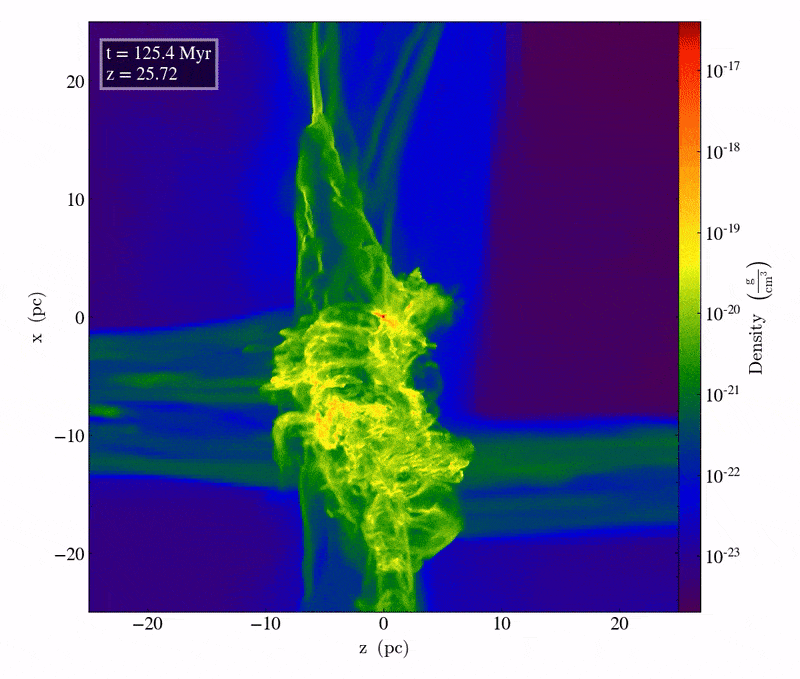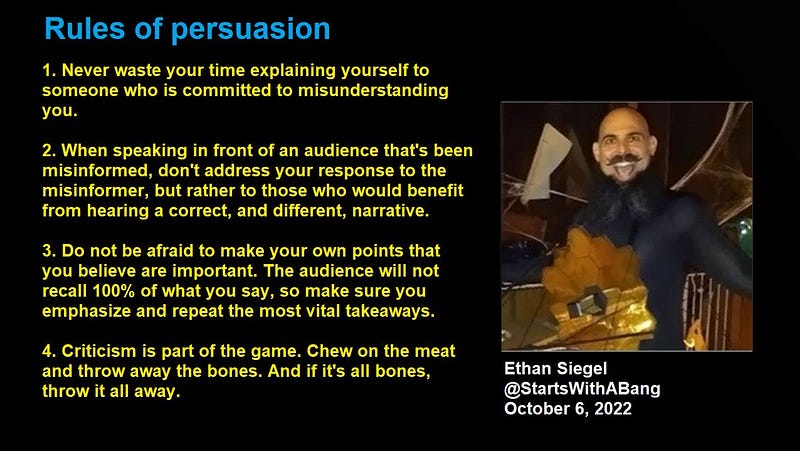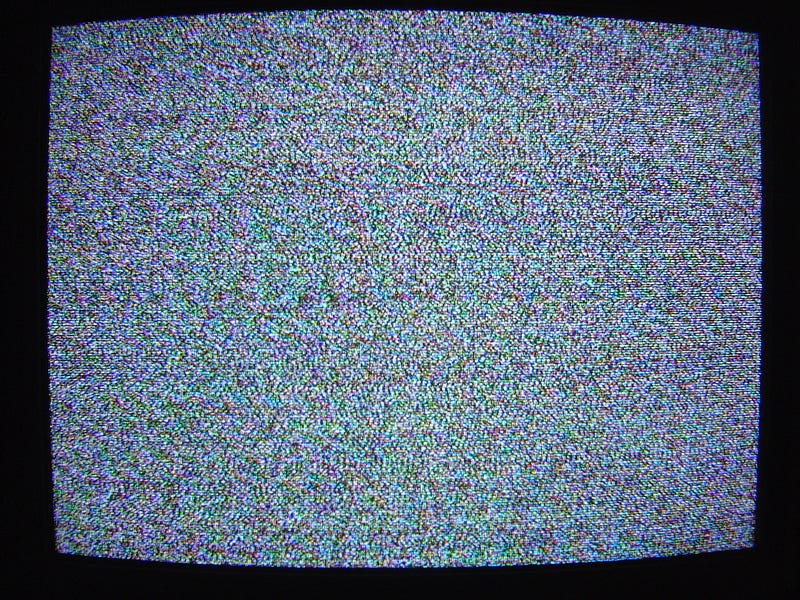Crafting Persuasive Science Communication: 4 Essential Rules
Written on

In an era where the loudest voices often dominate the discourse with outlandish claims, adhering to scientific truths may seem like an uphill battle. It’s reminiscent of Kassandra from Greek mythology, who could accurately predict the future yet was doomed not to be believed. The challenge of conveying well-researched knowledge in an accountable context should be appreciated, yet it often feels like a futile endeavor. In a climate where truth is undervalued and trust is scarce, the most confidently delivered falsehoods tend to spread quickly.
Those who have attempted to change the minds of the steadfastly misinformed are likely aware of Brandolini’s Law, which states that the effort needed to debunk misinformation far exceeds that required to create it. This is partly because challenging misinformation may not be the optimal approach; it risks granting undue credibility to invalid arguments and engages on an uneven battlefield. To advocate for scientific truth more effectively, consider implementing these four persuasive strategies.

When addressing any topic—be it scientific or otherwise—there are numerous effective communication methods. While everyone has a personal style, it’s beneficial to construct your narrative in a straightforward, fair, and accessible manner. Targeting the central 80% of your audience often proves to be a wise tactic, as it allows you to convey the most critical aspects of your message to the broadest group possible.
Starting from a relatable point is crucial; establish a foundation where your audience can align with you, then gradually introduce additional information to guide them through your reasoning. When you reach your conclusion, clarify how you arrived there, enabling your audience to comprehend and appreciate the journey. By doing so, they are more likely to grasp the key messages you wish to impart.

However, obstacles can arise in various forms. A frequent challenge is the presence of a widely accepted yet flawed narrative that has gained significant traction. Recent examples include unsupported assertions that:
- The Earth is flat.
- The COVID-19 pandemic originated from a lab-engineered virus.
- mRNA vaccines alter human DNA.
- Vaccines cause magnetism.
- 5G towers are harmful to health.
Most individuals, unless they have dedicated considerable time to becoming experts in a relevant scientific field, are unqualified to responsibly assess these claims. Yet, we must ultimately determine our beliefs, whom we trust, and what reasoning we accept. Once formed, these beliefs are often resistant to change, with people favoring their initial impressions on any issue.

For those of us committed to acquiring relevant expertise and effectively communicating our best understanding of truth and science to a general audience, what strategies can we employ against frauds, self-promoters, and those more interested in narratives than factual accuracy?
On October 6, 2022, I outlined four rules aimed at supporting honest science communicators in their persuasive efforts:
- Don’t waste time trying to explain your perspective to those who refuse to understand.
- When addressing a misinformed audience, direct your message towards those who can benefit from a correct narrative, not the misinformers.
- Feel free to assert your key points. Since audiences won’t remember everything you say, emphasize the most important takeaways.
- Criticism is inevitable. Evaluate its validity and discard what isn’t constructive. If all of it lacks value, disregard it entirely.
These rules can help you make compelling arguments, even amidst prevailing false narratives.

Rule #1: Never waste your time explaining yourself to someone who is committed to misunderstanding you.
The most prevalent false claims often come from individuals indifferent to facts and logic, focused solely on achieving their preferred outcome or instilling doubt about the conclusions they reject. It’s essential to identify when a person argues in this manner; they are fundamentally unwilling to comprehend your perspective.
Rather than attempting to convince them of their error—an endeavor likely to lead only to frustration—focus on formulating your arguments for an audience open to accepting your presented facts and following a logical progression to the conclusions those facts imply. While you may not change the mind of someone unwilling to understand, crafting your arguments can help those seeking truth reach a more informed conclusion.

Rule #2: When addressing an audience that has been misinformed, focus your narrative on informing them rather than engaging with the misinformer.
Science communication differs from legal argumentation; it’s not about winning by swaying others. Instead, it’s about revealing the scientific process, where facts, observations, and data guide us to conclusions. Regardless of the misinformer’s claims, share the accurate, evidence-based narrative.
Begin from a point where you believe the majority of your audience can relate, then introduce new information incrementally. Make it clear that scientific conclusions derive from data, not opinions, allowing everyone—regardless of their beliefs—to appreciate the scientific method.

Rule #3: Do not hesitate to emphasize your key points. Your audience is unlikely to remember everything, so ensure you highlight and repeat the essential takeaways.
Many counterarguments against factual claims stem from weak evidence. Rather than addressing these claims, focus on presenting your strongest evidence—data that should lead any impartial observer to a clear conclusion. Allow your audience to draw their own inferences based on solid evidence.
Rule #4: Accept that criticism is part of the process. Assess its merit and discard what is unhelpful.
Expect a mix of feedback, as some may agree with you, while the majority will likely respond negatively, especially if you challenge a polarizing figure’s claims. Embrace constructive criticism, as it can enhance your understanding and arguments. However, reject baseless critiques; doing so is the responsible course of action.

Remember: everyone is entitled to their opinion, but not all opinions hold equal value. Some may merely express frustrations without valid reasoning. Engaging with such views only amplifies their negativity without serving any constructive purpose.
By adhering to these strategies—shaping your narrative and focusing on the truth—you can navigate cognitive biases more effectively. One of the hardest admissions is, “I was wrong.” Approaching someone entrenched in misinformation with the aim of eliciting this admission places you at a disadvantage, often leading them to double down on their beliefs.
Instead, if you present a narrative that gently exposes the truth without triggering defensive reactions, you can help them reconsider their stance. People may not readily acknowledge conflicting beliefs but often will contemplate resolutions when confronted with new information.
In summary, craft your narrative. Start from an agreeable foundation, gradually introduce verifiable information, and lead your audience to your logical conclusion. Tailor your communication to your audience, and upon reaching your destination, remind them of your key points and how you arrived there. Critically assess any feedback, using valid points to refine your argument further.
Stay resilient against unfounded criticism from contrarians. In science communication, encountering new challenges often indicates you are making progress.
Starts With A Bang is authored by Ethan Siegel, Ph.D., the writer of Beyond The Galaxy and Treknology. Pre-order his Encyclopaedia Cosmologica here!